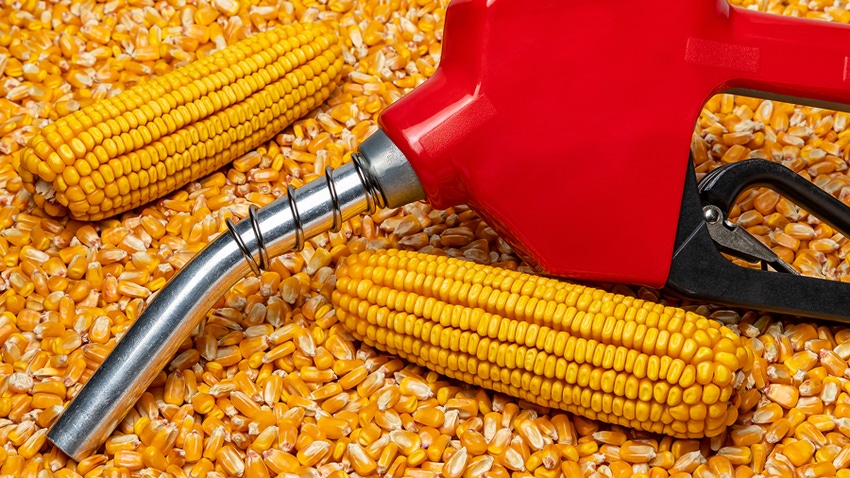EPA approves summer E15 sales in 8 midwestern states
A petition was submitted in 2022, but the new rule won’t go into effect until 2025.

In response to a petition from eight Midwest governors, EPA will allow summer E15 sales starting in 2025. Sales will be permitted in Illinois, Iowa, Minnesota, Missouri, Nebraska, Ohio, South Dakota and Wisconsin.
EPA officials say the decision was made after a review of emissions modeling results presented by the governors. Corn and renewable fuels trade associations applauded the move, though they’d hoped the rule would go into effect this summer.
“We are glad to hear this decision from EPA, as it puts us on the road to providing more certainty to America’s corn growers and consumers who will save money at the pump,” National Corn Growers Association President Harold Wolle says. “However, given that this decision will not take effect until the summer of 2025, we question and are concerned about the implications of the timeline for growers and consumers this summer.”
Wolle added he hopes Congress will eventually pass nationwide legislation allowing summer E15 sales, eliminating conflicting state regulations.
Sens. Deb Fischer, R- Neb., and Amy Klobuchar, D- Minn., introduced a bill last March that would do just that. It is currently being considered by the Senate Committee on Environment and Public Works.
EPA issued emergency waivers in 2022 and 2023 allowing summer E15 sales. Agriculture Secretary Tom Vilsack said earlier this week that he anticipates a similar waiver to be issued this year. Despite this, many in the biofuel sector have grown weary of the annual uncertainty.
Biofuel manufacturer POET is among those pushing for permanent nationwide legislation. Joshua Shields, POET senior vice president of corporate affairs, argues E15 reduces America’s reliance on foreign oil, cuts emissions, and lowers prices at the pump. He says the country has never needed all three more urgently than now.
“Truly maximizing the benefits of E15 will require repealing outdated and unnecessary federal restrictions,” Shields says. “A waiver for E15 this summer is an important next step, but Americans ultimately deserve a permanent nationwide fix guaranteeing the freedom to access E15 year-round in all 50 states.”
What this ruling means
Summer E15 sales have long been prohibited due to EPA concerns over emissions. However, states may petition EPA to opt out of certain provisions.
The eight Midwestern governors petitioned EPA for a summer E15 waiver in April 2022. They contend the agency was obligated to respond within 90 days. Instead, EPA took nearly a year to respond with a proposal. That proposal stipulated allowing summer E15 in 2025.
This prompted Nebraska and Iowa to sue the agency, saying it failed to meet its timeline as required. The states argue EPA responded slowly so it could have an excuse to not authorize summer E15 this year.
According to Renewable Fuels Association Senior Vice President for Government and Public Affairs Troy Bredenkamp, the new EPA rule changes little in the short term. However, it does give those eight states more certainty moving forward.
His organization continued to lobby for nationwide legislation. He’s also confident President Biden will issue another summer waiver.
“I don’t think you’d want to lose that lowest cost alternative at the pump four to five months before a general election,” Bredenkamp says.
Farm Futures grain market analyst Jacqueline Holland notes last summer’s E15 sales likely helped sustain corn prices farmers received during a weak export season. USDA National Agriculture Statistics Service data shows 1.778 billion bushels of corn were consumed between May and August 2023. That’s approximately 22.6 million bushels more than were consumed during same period in 2021, the most recent year EPA did not enact a summer E15 waiver.
Not everyone is thrilled
While ethanol advocates are eager to expand summer E15 sales, the fuel refinery industry is not as keen on the idea.
Gasoline at the pump typically includes a small percentage of benzene, a byproduct of the refining process. It is also a very volatile substance.
Ethanol has a slightly higher volatility than regular gasoline, though it is much lower than benzene. During the warmer summer months, fuel manufacturers must remove some benzene in order to adhere to federal volatility standards.
Biofuel supporters contend the cost of making this change is minimal and should be offset by the cheaper wholesale cost of ethanol. However, those on the refinery side say it’s not that simple.
Patrick Kelly, senior director of fuels and vehicle policy at the American Fuel & Petrochemical Manufacturers trade association, says it’s too late to implement summer E15 sales in 2024. In a statement issued shortly after EPA’s announcement, he suggested even 2025 could be problematic because refiners start switching to summer production early in the year. According to him, there must be a “reasonable transition” to producing summer gas in order to minimize costs.
“Studies show that even with at least a two-year lead time, the RVP (rapid vapor pressure) change will reduce overall supply, increase costs and make the region more vulnerable to supply disruptions,” Kelly says.” With less time, costs to produce and supply fuel and risks of supply disruptions could be greater."
About the Author(s)
You May Also Like





